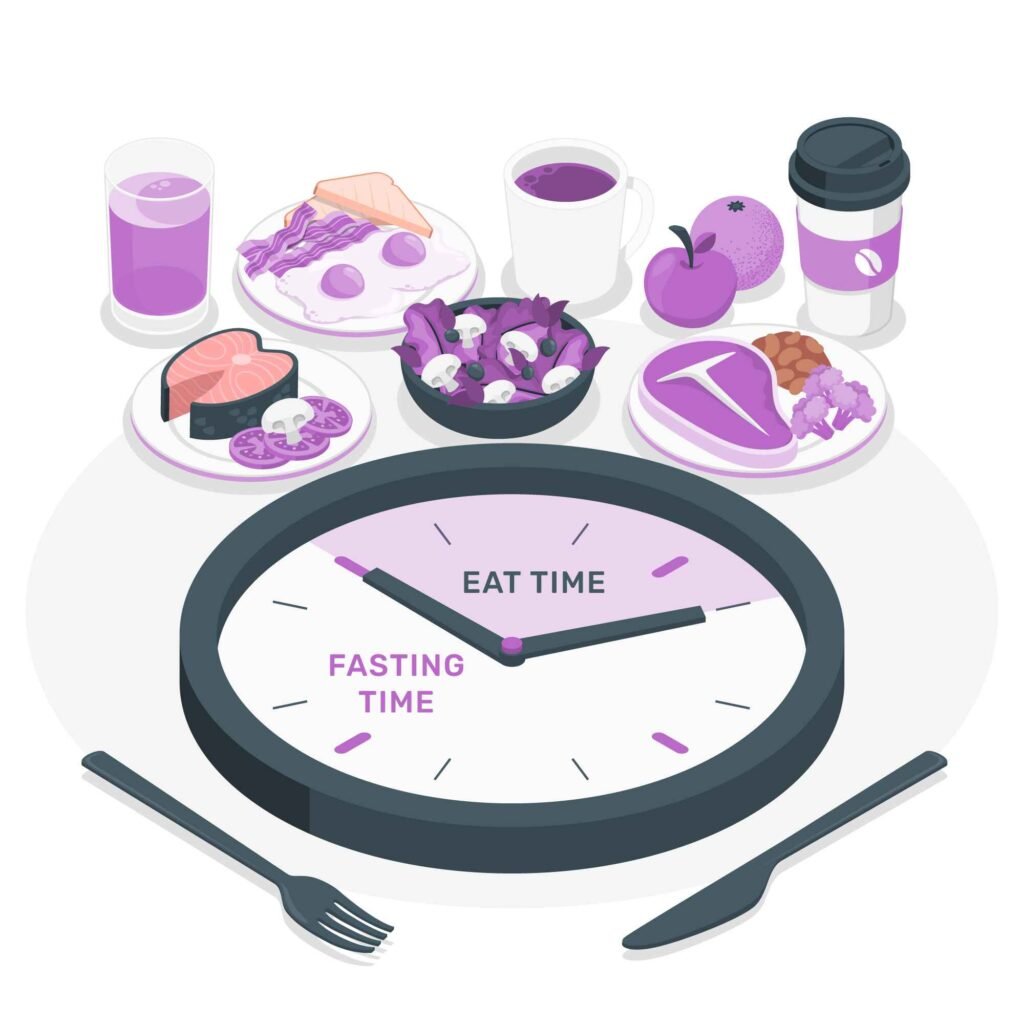
Navigating the Carnivore Diet: Benefits and Risks
Navigating the Carnivore Diet: Benefits and Risks
The carnivore diet has recently gained traction in the health and wellness world, sparking interest and controversy alike. Touted by its advocates as the ultimate approach to weight loss, inflammation reduction, and optimal health, this diet eliminates all plant-based foods and focuses solely on animal products. However, while it may sound intriguing, it’s essential to understand both the potential benefits and risks before deciding if it’s right for you.
In this comprehensive guide, we’ll explore the ins and outs of the carnivore diet, from its possible perks to the challenges you may face. Whether you’re considering going all-meat or just curious about this radical way of eating, here’s what you need to know.
What Is the Carnivore Diet?
The carnivore diet is as straightforward as it sounds: you consume only animal-based foods. This means meat, fish, eggs, and animal-based fats are on the menu, while fruits, vegetables, grains, nuts, and legumes are strictly off-limits. In some cases, dairy is included, but many strict carnivores avoid it due to its potential for inflammation.
Unlike other low-carb diets like keto, which focus on high fat and moderate protein, the carnivore diet emphasizes high protein and fat without any carbs at all. The philosophy behind this diet is that humans are primarily designed to thrive on animal foods and that eliminating plant foods can resolve many modern health issues.
What’s Allowed on the Carnivore Diet?
- Beef (steak, ground beef, etc.)
- Pork (chops, bacon, etc.)
- Poultry (chicken, turkey, etc.)
- Fish (salmon, sardines, mackerel, etc.)
- Eggs
- Animal fats (butter, tallow, lard)
- Organ meats (liver, kidneys, etc.)
- Bone broth
What’s Not Allowed?
- Vegetables
- Fruits
- Grains
- Legumes
- Nuts and seeds
- Processed foods
- Sugars and sweeteners
The Potential Benefits of the Carnivore Diet
Advocates of the carnivore diet highlight several potential benefits, particularly for those who have struggled with other dietary approaches. Here are some key advantages that have drawn people to this way of eating:
1. Weight Loss and Body Composition Improvements
One of the most compelling reasons people try the carnivore diet is its potential for weight loss. By eliminating carbohydrates, your body enters a fat-burning state known as ketosis. High protein intake can also boost satiety, helping you eat less and reduce cravings naturally.
Additionally, the simplicity of the diet makes it easy to stick to — no calorie counting or complicated meal plans. Many people report rapid weight loss and improved muscle definition when following a strict carnivore diet.
2. Reduced Inflammation
Chronic inflammation is linked to numerous health problems, including arthritis, autoimmune diseases, and heart disease. Some proponents of the carnivore diet claim that cutting out plant-based foods reduces inflammation, as plants contain compounds like lectins, oxalates, and phytates, which can trigger immune responses in sensitive individuals.
By focusing solely on animal-based nutrition, some people report reduced joint pain, clearer skin, and overall improvements in inflammatory symptoms.
3. Improved Mental Clarity and Mood
Brain fog, fatigue, and mood swings are common complaints in today’s fast-paced world. The carnivore diet may offer mental clarity by stabilizing blood sugar levels and eliminating potential food triggers.
Without the highs and lows associated with carbohydrate consumption, many people find they experience sustained energy, sharper focus, and better mood stability. Additionally, the high intake of essential fatty acids from animal products supports brain health.
4. Simplified Eating and Meal Planning
For those tired of complex diets and endless food choices, the carnivore diet offers simplicity. There’s no need to stress about macronutrient ratios, portion sizes, or recipe planning. If it comes from an animal, it’s on the menu. This streamlined approach can reduce decision fatigue and make meal prep easier.
The Risks and Challenges of the Carnivore Diet
While the carnivore diet has its supporters, it’s not without risks. Cutting out entire food groups can have consequences, and the long-term health effects of this diet are still largely unknown. Here are some potential risks and challenges to consider:
1. Nutrient Deficiencies
Eliminating plant-based foods means missing out on essential vitamins, minerals, and fiber found in fruits, vegetables, and whole grains. While animal foods are nutrient-dense, they lack certain nutrients like vitamin C, fiber, and antioxidants.
Over time, a lack of these nutrients can lead to deficiencies that may impact your immune function, gut health, and overall well-being.
2. Digestive Issues
A diet devoid of fiber can lead to digestive challenges, including constipation. Fiber from plant-based sources plays a key role in maintaining a healthy gut microbiome and promoting regular bowel movements.
On the carnivore diet, some people experience initial digestive discomfort as their body adjusts. While some adapt over time, others may find it difficult to maintain optimal gut health without fiber.
3. Potential Heart Health Concerns
The carnivore diet is high in saturated fats and cholesterol due to its heavy reliance on animal products. While recent research challenges the link between saturated fat and heart disease, the debate continues.
If you have a history of heart problems, high cholesterol, or other cardiovascular concerns, it’s important to consult a healthcare professional before adopting a carnivore diet. Monitoring your blood lipid levels and overall heart health is essential.
Is the Carnivore Diet Sustainable Long-Term?
One major consideration when exploring the carnivore diet is its long-term sustainability. While some people thrive on this way of eating for weeks or even months, others find it challenging to maintain over time. The lack of variety, social constraints, and potential health risks may make it difficult to stick with the diet indefinitely.
Moreover, research on the long-term effects of an all-meat diet is limited. While short-term benefits like weight loss and reduced inflammation may be appealing, it’s essential to weigh these against potential long-term health implications.
Practical Tips for Starting the Carnivore Diet
If you’re considering trying the carnivore diet, transitioning smoothly is key to maximizing potential benefits and minimizing discomfort. Here are some actionable tips to help you get started:
1. Ease Into It Gradually
Jumping straight into an all-meat diet can be a shock to your system. Consider easing in by first reducing your carb intake and eliminating processed foods. Move from a standard diet to a low-carb or ketogenic diet for a few weeks before going full carnivore.
2. Prioritize High-Quality Meats
Not all meat is created equal. Opt for high-quality, nutrient-dense options such as:
- Grass-fed beef: Rich in omega-3 fatty acids and antioxidants.
- Wild-caught fish: Excellent source of omega-3s and minerals.
- Pasture-raised poultry and eggs: Higher in vitamins and healthier fats.
- Organ meats: Packed with essential vitamins and minerals like vitamin A, iron, and B12.
High-quality meats not only support your health but also reduce exposure to hormones, antibiotics, and toxins found in conventionally raised meat.
3. Stay Hydrated and Mind Your Electrolytes
When eliminating carbohydrates, your body may shed water and electrolytes quickly. This can lead to symptoms of the “keto flu,” such as headaches, fatigue, and dizziness. To combat this:
- Drink plenty of water.
- Consider adding a pinch of salt to your water to replenish sodium.
- Include potassium-rich foods like beef and fish.
- Bone broth is a great source of minerals and electrolytes.
4. Listen to Your Body
Everyone’s body responds differently to dietary changes. Pay attention to how you feel and adjust accordingly. Common adjustments might include increasing your fat intake or trying different cuts of meat. If you experience persistent issues, it may be a sign that the diet isn’t working for you.
5. Plan Your Meals
Meal planning can make your transition easier. Focus on simple recipes with various meat types to keep things interesting. Examples of daily meals could include:
- Breakfast: Eggs and bacon.
- Lunch: Grilled chicken thighs or beef patties.
- Dinner: Ribeye steak or salmon fillets.
6. Be Prepared for Social Challenges
The carnivore diet can be difficult to navigate in social settings or dining out. Be ready to explain your dietary choice or look for meals that are easy to adapt, such as ordering a burger without the bun or a steak with no sides.
Variations of the Carnivore Diet
The carnivore diet isn’t one-size-fits-all. There are several variations that can accommodate different needs and preferences. Here are a few options:
1. Strict Carnivore Diet
This is the most extreme version, where you consume only animal products. No dairy, no seasonings, and no processed meats. It focuses solely on beef, lamb, pork, poultry, fish, and animal fats.
2. Carnivore Keto
A blend of the carnivore and ketogenic diets, this version allows for a higher fat intake, such as butter, cheese, and heavy cream. It aims to maintain ketosis while enjoying the simplicity of the carnivore diet.
3. Carnivore with Dairy
Some people include dairy products like cheese, butter, and cream. Dairy can provide additional variety and nutrients but may cause inflammation or digestive issues for some individuals.
4. Nose-to-Tail Carnivore
This approach emphasizes consuming all parts of the animal, including organ meats, bone marrow, and collagen. It maximizes nutrient intake and minimizes waste.
5. Carnivore with Seasonings
For those who want to add a bit of flavor, minimal seasonings like salt, pepper, and herbs may be included. This can make the diet more enjoyable and easier to stick with long-term.
How to Know if the Carnivore Diet Is Right for You
Deciding to follow the carnivore diet is a personal choice. While it may offer benefits for some, it might not be suitable for everyone. Here are some factors to consider:
1. Health Goals
- Weight Loss: If you’re looking for a straightforward approach to weight loss, the carnivore diet’s simplicity and high protein intake may help.
- Inflammation Reduction: If you suffer from chronic inflammation or autoimmune issues, eliminating potential plant-based triggers may provide relief.
- Mental Clarity: Many people report improved focus and energy when eliminating carbs and processed foods.
2. Health Conditions
- Digestive Issues: If you have digestive problems like irritable bowel syndrome (IBS) or leaky gut, the carnivore diet may offer relief by eliminating fiber and plant compounds.
- Heart Health Concerns: If you have a history of heart disease or high cholesterol, consult a healthcare professional before starting the diet.
- Nutrient Deficiencies: If you are prone to deficiencies, the lack of vitamins and minerals from plant foods could be problematic.
3. Lifestyle Compatibility
Consider whether the diet fits into your lifestyle. If you love variety, social dining, or cooking elaborate meals, the carnivore diet may feel restrictive. On the other hand, if you prefer simplicity and structure, this diet could be a good fit.
4. Trial Period
If you’re uncertain, try the carnivore diet for a short period, such as 30 days. Monitor how you feel physically and mentally. Keep track of changes in energy, digestion, weight, and overall well-being. This trial period can help you determine if it’s worth pursuing longer term.
Common Myths About the Carnivore Diet
As with any unconventional diet, misconceptions abound. Let’s debunk some of the most common myths about the carnivore diet:
Myth 1: You Can’t Get Enough Vitamins Without Vegetables
Animal products, especially organ meats, are nutrient-dense and provide most of the essential vitamins and minerals. For example:
- Vitamin A: Found in liver.
- B Vitamins: Abundant in meat, fish, and eggs.
- Vitamin D: Found in fatty fish and egg yolks.
Myth 2: The Carnivore Diet Causes Kidney Damage
While high protein intake can be a concern for people with pre-existing kidney issues, there’s no strong evidence that it harms healthy kidneys. Staying hydrated is key to maintaining kidney function.
Myth 3: You’ll Develop Scurvy Without Fruits
Scurvy is caused by a lack of vitamin C. While plant foods are the usual source, fresh meat, especially organ meats, contains small amounts of vitamin C that can prevent deficiencies.
Myth 4: Eating Only Meat Is Boring
While it may seem monotonous, there’s plenty of variety in the types of meat, cuts, cooking methods, and seasonings you can use. Experimenting with different preparations keeps things interesting.
Frequently Asked Questions (FAQs) About the Carnivore Diet
As more people become curious about the carnivore diet, a lot of questions arise. Here are answers to some of the most common queries to help you navigate this way of eating with confidence.
1. Can You Exercise on the Carnivore Diet?
Yes! Many people report excellent performance and recovery while following the carnivore diet. The high protein intake helps build and repair muscle, while the fats provide sustained energy.
However, during the initial transition, you may experience a drop in performance due to the body’s adjustment to using fat for fuel instead of carbohydrates. This phase typically lasts 1-2 weeks.
2. Will I Get Enough Fiber on the Carnivore Diet?
The carnivore diet eliminates fiber since it cuts out plant-based foods. While this may seem problematic, some people find that they don’t need fiber for regular bowel movements.
The absence of fiber might reduce bloating and gas for some individuals. However, if you experience constipation, consider incorporating more fatty cuts of meat and staying hydrated.
3. Is the Carnivore Diet Safe for Women?
Many women have successfully followed the carnivore diet and reported benefits like improved hormonal balance, reduced PMS symptoms, and better skin health. However, women need to pay attention to potential nutrient deficiencies, especially iron, calcium, and magnesium.
If you’re pregnant, breastfeeding, or have hormone-related concerns, consult your healthcare provider before adopting this diet.
4. Can the Carnivore Diet Help with Autoimmune Diseases?
Some people with autoimmune conditions like rheumatoid arthritis, psoriasis, and lupus have reported symptom relief on the carnivore diet. By removing plant-based triggers like lectins and oxalates, the diet may reduce inflammation.
However, scientific research is limited, and individual results may vary. Always consult a medical professional before making significant dietary changes to manage autoimmune conditions.
5. Will I Miss Out on Antioxidants?
While plants are known for their antioxidant content, animal products also contain antioxidants like glutathione, taurine, and carnosine. These antioxidants play a role in reducing oxidative stress and inflammation.
Organ meats and grass-fed beef are particularly rich in these beneficial compounds, making them excellent choices on a carnivore diet.
Real-Life Testimonials: Success Stories and Challenges
Hearing from people who’ve tried the carnivore diet can provide valuable insights into what to expect. Here are a few real-life experiences:
Success Story: Mark’s Journey to Weight Loss and Energy
Mark, a 42-year-old office worker, struggled with obesity and low energy levels for years. After trying various diets with limited success, he decided to give the carnivore diet a shot.
Within three months, Mark lost 30 pounds, his joint pain disappeared, and his energy levels soared. He credits the simplicity of the diet for helping him stay consistent and avoid the temptation of processed foods.
Mark’s Tip: “Don’t overthink it. Focus on fatty meats like ribeyes and ground beef, and drink plenty of water. The results speak for themselves.”
Challenge: Sarah’s Struggle with Social Situations
Sarah, a 28-year-old fitness enthusiast, found the carnivore diet worked wonders for her digestion and skin health. However, she faced challenges when dining out with friends or attending family gatherings.
She often felt isolated and struggled to explain her diet choices to others. After three months, she decided to adopt a more flexible version, incorporating some low-carb vegetables.
Sarah’s Tip: “It’s okay to adapt the diet to fit your lifestyle. Listen to your body and find a balance that works for you.”
Mixed Experience: Jake’s Health Improvements but Nutrient Deficiencies
Jake, a 35-year-old who suffered from chronic bloating and fatigue, found initial relief on the carnivore diet. His digestion improved, and he felt more focused. However, after six months, blood tests revealed low levels of vitamin C and magnesium.
Jake decided to incorporate occasional fruits and vegetables while maintaining a meat-heavy diet. This adjustment helped him maintain the benefits while addressing deficiencies.
Jake’s Tip: “Monitor your health closely. The carnivore diet can be powerful, but make sure you’re not missing out on key nutrients.”
Potential Pitfalls to Avoid on the Carnivore Diet
While the carnivore diet can be effective, there are potential pitfalls that can hinder your success. Here’s how to avoid common mistakes:
1. Not Eating Enough Fat
Protein is essential, but fat is your primary energy source on the carnivore diet. If you’re feeling fatigued, irritable, or constantly hungry, you may not be consuming enough fat. Opt for fatty cuts of meat like ribeye, pork belly, and ground beef.
2. Ignoring Electrolyte Balance
When you cut carbs, your body sheds water and electrolytes. Low levels of sodium, potassium, and magnesium can cause symptoms like headaches, muscle cramps, and dizziness. Combat this by:
- Adding salt to your meals.
- Drinking bone broth.
- Considering magnesium supplements if needed.
3. Relying on Processed Meats
Bacon, sausages, and deli meats are convenient, but they often contain preservatives, additives, and unhealthy fats. Prioritize fresh, unprocessed meats to ensure you’re getting the best nutrition.
4. Overeating or Undereating
The simplicity of the carnivore diet can sometimes lead to overeating or undereating. Listen to your hunger cues and eat until you feel satisfied. There’s no need to count calories, but maintaining balance is key.
5. Not Monitoring Your Health
Regular health check-ups are crucial when following a restrictive diet. Monitor your cholesterol, blood pressure, nutrient levels, and overall well-being. If you notice any issues, consult a healthcare professional.
How to Transition Off the Carnivore Diet Safely
Whether you’ve achieved your goals or feel the diet isn’t right for you, transitioning off the carnivore diet should be done gradually to avoid shocking your digestive system. Here’s a step-by-step approach:
1. Introduce One Food Group at a Time
Start by adding low-carb vegetables like spinach, zucchini, and cucumbers. These are easy to digest and provide essential nutrients.
2. Add Fruits Slowly
After a week of incorporating vegetables, try adding fruits like berries, which are low in sugar and high in antioxidants. Pay attention to how your body reacts.
3. Reintroduce Healthy Fats
If you eliminated dairy, reintroduce options like butter, ghee, and hard cheeses. Monitor for any signs of inflammation or digestive discomfort.
4. Consider Whole Grains and Legumes Last
Whole grains and legumes should be added carefully. These foods contain lectins and fiber, which may be hard on your digestive system initially. Soak or sprout grains and legumes to reduce their anti-nutrient content.
5. Listen to Your Body
Everyone’s tolerance is different. Some people may thrive with more plant-based foods, while others feel best with a meat-heavy approach. Adjust your diet based on your energy levels, digestion, and overall health.



